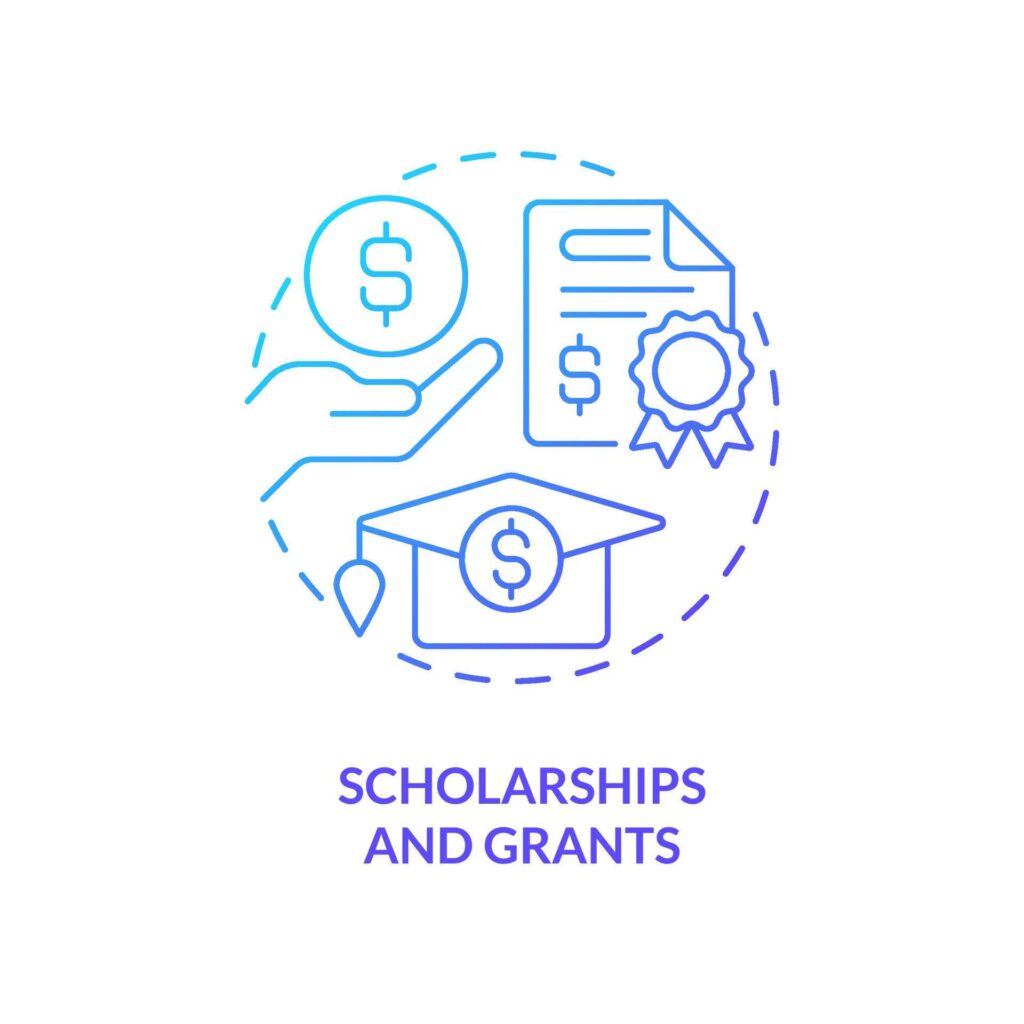I remember staring at my university acceptance letter, my heart doing a strange dance of excitement and dread. Excitement because, well, it was the university, the one I’d dreamed of. Dread because, quite frankly, my bank account looked like a desert. My parents worked incredibly hard, but tuition fees felt like climbing Mount Everest in flip-flops. I thought my dream was just that – a dream, destined to stay locked in my head.
Have you ever felt that pit in your stomach, the one that tells you your passion, your future, your project, is just too expensive? That’s where I was. I was ready to give up, to put my dreams on a shelf labeled "someday, maybe." But then, a friend, bless her persistent soul, looked at me and said, "Have you even looked into scholarships? Or grants?"
My response? A blank stare. "What are those?" I asked, feeling foolish. She just smiled, a knowing kind of smile, and said, "They’re basically free money for your education or your projects, my friend. And you don’t pay it back."
"Free money?" I scoffed. "Sounds too good to be true." But desperation is a powerful motivator. So, with a healthy dose of skepticism and a tiny spark of hope, I started my journey. And let me tell you, it wasn’t just "good." It was life-changing.
Unpacking the Magic: What Exactly Are Grants and Scholarships?
Before we dive deeper into my adventure, let’s clear up what we’re actually talking about. Because for a long time, I thought they were just fancy words for "loans you eventually have to repay." Oh, how wrong I was!
Scholarships: Your Golden Ticket to Education
Think of scholarships as a gift specifically for your education. They’re money awarded to students to help pay for tuition, fees, books, and sometimes even living expenses. And here’s the best part – you do NOT have to pay them back. Ever.
Scholarships come in all shapes and sizes, and they’re given out for a gazillion different reasons:
- Merit-Based: These are often given for academic achievement (good grades!), but also for talents in sports, music, art, leadership, or community service. If you’re good at something, there’s probably a scholarship for it.
- Need-Based: These are for students who can demonstrate financial need. The idea is to help level the playing field so that everyone, regardless of their family’s income, has a chance at higher education.
- Specific Criteria: This is where it gets really interesting! There are scholarships for students from specific ethnic backgrounds, those studying certain subjects (like STEM or nursing), people who live in certain towns, or even those with unusual hobbies (like duck calling, seriously!).
I initially thought scholarships were only for straight-A geniuses. But as I started digging, I found out that wasn’t true at all. My grades were decent, but I also had a strong passion for writing and a history of volunteering. It turns out, those things counted!
Grants: The Fairy Godmother for Your Projects and Beyond
Now, grants are a bit broader, but they share that glorious "no repayment" feature. Grants are funds given by organizations, foundations, or government agencies to individuals or groups for specific purposes. While many grants do go to students for educational expenses (often called "student grants"), they can also fund:
- Research Projects: If you have an idea for a scientific study, a historical investigation, or even a creative project, a grant could make it happen.
- Community Initiatives: Want to start a local recycling program, build a community garden, or offer free tutoring? Grants are often available for these kinds of impactful projects.
- Artistic Endeavors: Musicians, painters, writers, filmmakers – there are grants designed to support artists in their creative pursuits.
- Small Businesses: Sometimes, grants are available to help kickstart or grow small businesses, especially those with a social impact.
For me, the immediate goal was education, so scholarships were my primary focus. But understanding grants opened my eyes to a world where ideas, not just money, could drive progress. It made me realize that financial help isn’t just for the academically elite; it’s for anyone with a worthy goal and a compelling story.
My First Steps: Where Do You Even Begin This Hunt?
The idea of "free money" sounded great, but the actual search felt like trying to find a needle in a haystack. Where do you even start? My friend simply said, "Google it!" and while that was a start, I quickly learned there’s a method to the madness.
Here’s where I began my own treasure hunt for funding:
- University Financial Aid Offices: This was my first stop, and it should be yours too if you’re looking for college funding. My university had a dedicated financial aid website and counselors. They knew about institutional scholarships (money from the university itself) and could point me towards external ones relevant to my field of study or background. Always check your school’s website first!
- Government Websites: For students in the US, the Free Application for Federal Student Aid (FAFSA) is crucial. It opens doors to federal grants (like the Pell Grant) and other aid. Other countries have similar government programs. These are often need-based and can be a huge help. Don’t skip this step!
- Scholarship Search Engines: There are websites specifically designed to help you find scholarships. Think of them like dating apps, but for money and your education!
- Fastweb.com
- Scholarships.com
- Cappex.com
- BigFuture by College Board
- Niche.com
You create a profile, input your details (grades, interests, background, major), and they match you with potential scholarships. It can be overwhelming at first, but it filters through thousands of options.
- Local Organizations and Community Groups: This is often overlooked but can be a goldmine. Check with your local Rotary Club, Lions Club, women’s groups, religious organizations, credit unions, and even large local businesses. Many of them offer scholarships to students from their community. The competition here is often much lower!
- Professional Associations: If you know what you want to study or what career path you’re aiming for, look up professional associations in that field. Many offer scholarships to encourage new talent. For example, if you want to be an engineer, look for engineering associations.
- Employers (Yours or Your Parents’): Some companies offer scholarships to employees or their children. It’s worth asking!
- Foundations and Non-Profits: Thousands of foundations exist with specific missions – supporting environmental science, helping students with disabilities, promoting specific cultures, etc. A targeted Google search like "scholarships for [your major] [your ethnicity/background]" can lead you to these.
I started making lists. Long lists. It felt like a part-time job just finding opportunities. But with each potential scholarship I found, that little spark of hope grew brighter.
The Art of the Application: Telling Your Story
Finding the scholarships was one thing; actually applying was another beast entirely. My friend was right – it wasn’t just about filling forms. It was about telling my story, authentically and compellingly.
Here’s what I learned about crafting an application that stands out:
-
Read the Instructions. Twice. Then a Third Time.
This sounds obvious, right? But you wouldn’t believe how many people get rejected because they missed a deadline, forgot a document, or didn’t answer the essay prompt correctly. Treat every instruction as sacred. If they ask for 500 words, don’t write 499 or 501. -
Understand the Funder’s Mission.
Every organization giving out money has a reason. They want to support specific values, help particular groups, or advance certain causes. Before you write a single word, research them. What are they passionate about? What kind of student or project are they looking to support?
My Tip: Tailor your application to their mission. Don’t just copy and paste the same essay everywhere. Show them you understand and align with their goals. -
Tell Your Story – Authentically.
This is the most crucial part. Scholarship committees read hundreds, sometimes thousands, of applications. What makes you unique? What challenges have you overcome? What drives your passion? How will their money help you achieve your goals, and how will those goals, in turn, contribute to something bigger?- Don’t just list achievements; explain their significance. Instead of "I volunteered at a soup kitchen," try "Volunteering at the soup kitchen taught me the profound impact of community support, sparking my desire to pursue a career in social work where I can advocate for marginalized voices."
- Be vulnerable (within reason). If financial hardship is why you need the scholarship, don’t be afraid to articulate it clearly and respectfully.
- Show, don’t just tell. Instead of saying "I am a leader," describe a time you led a team through a difficult project.
-
Get Stellar Recommendation Letters.
Most scholarships require letters from teachers, mentors, or employers. Choose people who know you well, can speak to your strengths, and are good writers.
My Tip: Ask them well in advance. Provide them with your resume, the scholarship requirements, and a brief summary of why you’re applying. Make it easy for them to write a glowing letter! -
Proofread, Proofread, Proofread!
A typo or grammatical error can make you look careless. Read your essay aloud. Ask a trusted friend, parent, or teacher to review it. Use online tools to check for errors. A perfect essay with a glaring mistake can be instantly dismissed. -
Gather All Documents Early.
Transcripts, test scores, financial statements, essays, recommendation letters – the list can be long. Start collecting everything well before the deadline. Waiting until the last minute is a recipe for stress and missed opportunities.
I spent hours on each application. I rewrote essays, polished my resume, and carefully selected my recommenders. It felt like I was putting my whole self out there, hoping someone would see the potential I knew was inside me.
The Bumpy Road: Rejection and Resilience
Let me be honest with you: it wasn’t all sunshine and acceptance letters. Oh, there were rejections. Plenty of them. Emails that started with "We regret to inform you…" became a familiar sight in my inbox. Each one stung a little. It’s easy to feel discouraged, to think, "Maybe I’m not good enough," or "This whole ‘free money’ thing is too good to be true."
There were days I wanted to throw in the towel. Days I felt like my story wasn’t compelling enough, my grades weren’t high enough, my achievements not impressive enough. But that little voice, the one that had initially sparked my hope, kept whispering: "Keep going. What do you have to lose?"
I learned a crucial lesson during this phase: rejection is redirection, not the end. Each "no" simply meant that wasn’t the right fit, or that another applicant’s story resonated more for that particular opportunity. It didn’t diminish my worth or the validity of my dream.
So, I kept applying. I tweaked my essays, sought feedback, and looked for new opportunities. I focused on the process, not just the outcome. And then, one day…
The Moment It All Changed: The First "Yes!"
I remember the email subject line: "Congratulations – Scholarship Award!" My heart did a little flip. I nearly fell off my chair. It wasn’t the biggest scholarship I had applied for, but it was my first. It was real. It was tangible.
A wave of relief washed over me. It wasn’t just the money, though that was a huge weight lifted. It was the validation. Someone believed in me. Someone saw the potential, the passion, the story I had worked so hard to tell.
That first "yes" fueled me. I continued to apply, and slowly, surely, more acceptances started to trickle in. Some were small, covering books for a semester. Others were larger, making a significant dent in tuition. By the time I started university, I had pieced together enough funding from various sources to significantly reduce my financial burden. My "desert" bank account started to look a little less barren.
Beyond the Money: The Unseen Benefits
While the financial relief was immense, the journey of applying for grants and scholarships taught me so much more:
- Confidence: The act of articulating my goals and achievements, and then being recognized for them, boosted my self-esteem in ways I hadn’t anticipated.
- Research Skills: I became a pro at digging for information, sifting through endless websites, and identifying credible sources.
- Writing and Communication: My essay-writing skills improved dramatically. I learned how to craft a compelling narrative and communicate complex ideas clearly.
- Networking: I connected with professors, mentors, and community leaders for recommendation letters, building valuable relationships along the way.
- Perseverance: I learned that tenacity pays off. Facing rejection and continuing to push forward is a skill that serves you well in all aspects of life.
These weren’t just about paying for school; they were about investing in myself.
Your Turn: Actionable Advice for Your Journey
My story isn’t unique. Thousands of people every year find funding for their education and projects through grants and scholarships. Your journey might look different, but the core principles remain. If you’re feeling that familiar pit in your stomach about finances, here’s my heartfelt advice:
- Start Early, Like, Yesterday! Many deadlines are months, even a year, in advance. The earlier you start your research and applications, the more opportunities you’ll find.
- Cast a Wide Net: Don’t put all your eggs in one basket. Apply for every scholarship and grant you are even remotely qualified for. Remember, smaller, less competitive local scholarships can add up!
- Tailor Every Application: Seriously, don’t just copy and paste. Show each funder that you understand their mission and how you fit into it.
- Tell Your Authentic Story: Don’t try to be someone you’re not. Share your passions, your struggles, your dreams. What makes you, you?
- Proofread Relentlessly: A fresh pair of eyes can catch mistakes you’ve overlooked a dozen times.
- Don’t Be Afraid to Ask for Help: Reach out to teachers, counselors, mentors for advice, recommendations, and essay reviews.
- Embrace Rejection (and Learn from It): It’s part of the process. Don’t let it stop you. Every "no" brings you closer to a "yes."
- Organize Everything: Keep track of deadlines, requirements, essays, and contact information for each application. A simple spreadsheet can be a lifesaver.
The Secret is Out: It’s Possible!
So, there you have it. My secret weapon against financial barriers. Grants and scholarships aren’t some mythical treasure only for a select few. They are real opportunities, waiting for real people with real dreams.
It takes effort, persistence, and a willingness to tell your story. But the payoff? It’s immeasurable. It’s the freedom to pursue your education, to launch your passion project, to build the future you’ve always envisioned, without the crushing weight of debt.
Don’t let money be the reason your dreams stay on that dusty shelf. Take a deep breath, open that browser, and start your own treasure hunt. The "free money" is out there, and your story is waiting to be told. Go get it!
![]()


